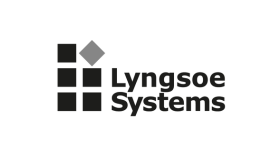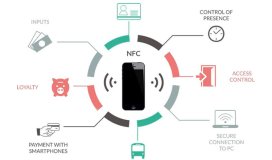In supply chain management, overall success is tied to specific measurements. Successfully managed supply chains are able to achieve 99% traceability, 99% visibility, 99% efficiency, and 99% accountability. Achieving such goals can be nearly impossible using manual processes.
When RFID technology is properly implemented, it allows the supply chain to watch those percentages rise, saving money and increasing profits. These four concepts are not only relevant in supply chain management and logistics – they pertain to most businesses. Because of the transparent nature of the supply chain, it is an ideal example of where manual processes fall short and where RFID can improve results.
In order to understand how RFID can affect these four measurements, the first step is to learn how the supply chain industry defines them, and then managers can understand how to achieve them.
TraceabilityTraceability
What is it? The ability to verify the history, location, or application of an item by means of documented, recorded identification. [1]
How do I accomplish it? Supply chain managers can increase traceability using RFID. Tagging valuable items and setting up RFID read zones at different locations can give managers the ability to track the various steps that an item takes throughout a facility. If an item is subjected to intense processes like melting, the item can still be accurately tracked using RFID. Tagging a tote that moves with the item throughout the facility will allow the item to be tracked without potentially harming the RFID tag. Below is an example of how RFID can increase traceability in the supply chain.

1. Track & Trace – Increased traceability can provide valuable results for a supply chain manager. For example, if an item is determined to have a defect and the consumer or retailer informs the company, the manager can see the path that the item took throughout the facility. The documented path will not only help pinpoint the location of the problem, but it may also determine if any other items could have been compromised at the same location. If there are additional items that could have been compromised, the items’ RFID tags can be traced and located, and the items can be removed from shelves.
What does increased traceability do for me? If supply chain managers have increased traceability, they are able to track each item throughout the supply chain. This reduces the risk of lost or stolen items and expensive, over-estimated recalls which saves the company money.
VisibilityVisibility
What is it? The ability to accurately and completely view the processes, transactions, and other activities operating within an enterprise. [2]

How do I accomplish it? Supply chain managers can increase visibility by using RFID. Tagging items, inventory, and equipment allows supply chain managers to accurately provide important data to additional companies in the supply chain. Below are a few examples of the information that supply chain managers can have by using RFID.
1. Number of items in production
2. Number of items in specific steps of production
3. Amount of money tied up in equipment/inventory
4. Exact forecasting dates for item production
5. Amount of raw materials needed
6. Equipment wear and tear information
What does increased visibility do for me? This data can help each member of the supply chain as well as the consumer by preventing out-of-stocks as well as preventing over-purchasing of inventory and raw materials. It also gives the supply chain manager the ability to provide firm dates of production and lead times, which is important for any business’ customer service.
EfficiencyEfficiency
What is it? The state of quality of being efficient, or able to accomplish something with the last waste of time and effort; competency in performance. [3]
How do I accomplish it? Not all business performance metrics build on one another, but efficiency is best accomplished with a high level of visibility. Tagging items and equipment in a facility provides the supply chain manager increased visibility. By collecting and interpreting data collected from RFID tag reads, managers can make informed decisions about how to improve processes and workflows in order to be more efficient. Below are two examples of how RFID can increase efficiency in the supply chain.
1. Routine Maintenance – Equipment on the facility floor can be uniquely tagged using RFID. Each equipment’s unique ID can be associated with information such as purchase date, last service date, and amount of cycles performed. Having this information allows the manager to better predict the machine’s performance as well as when maintenance is required and, in turn, allows personnel the ability to service the piece of equipment on time. Without such information, equipment could break down unexpectedly, causing a lapse in production.



